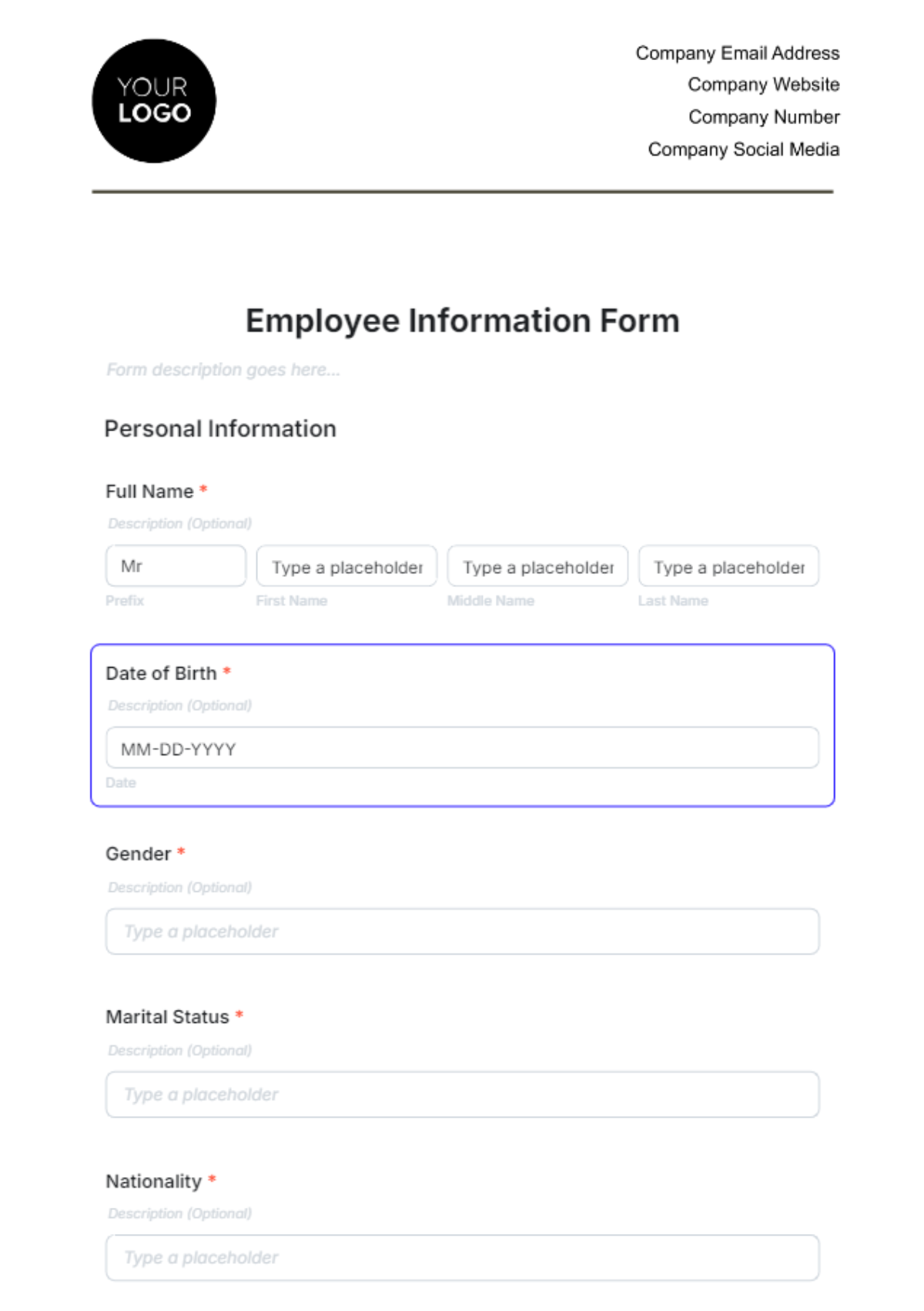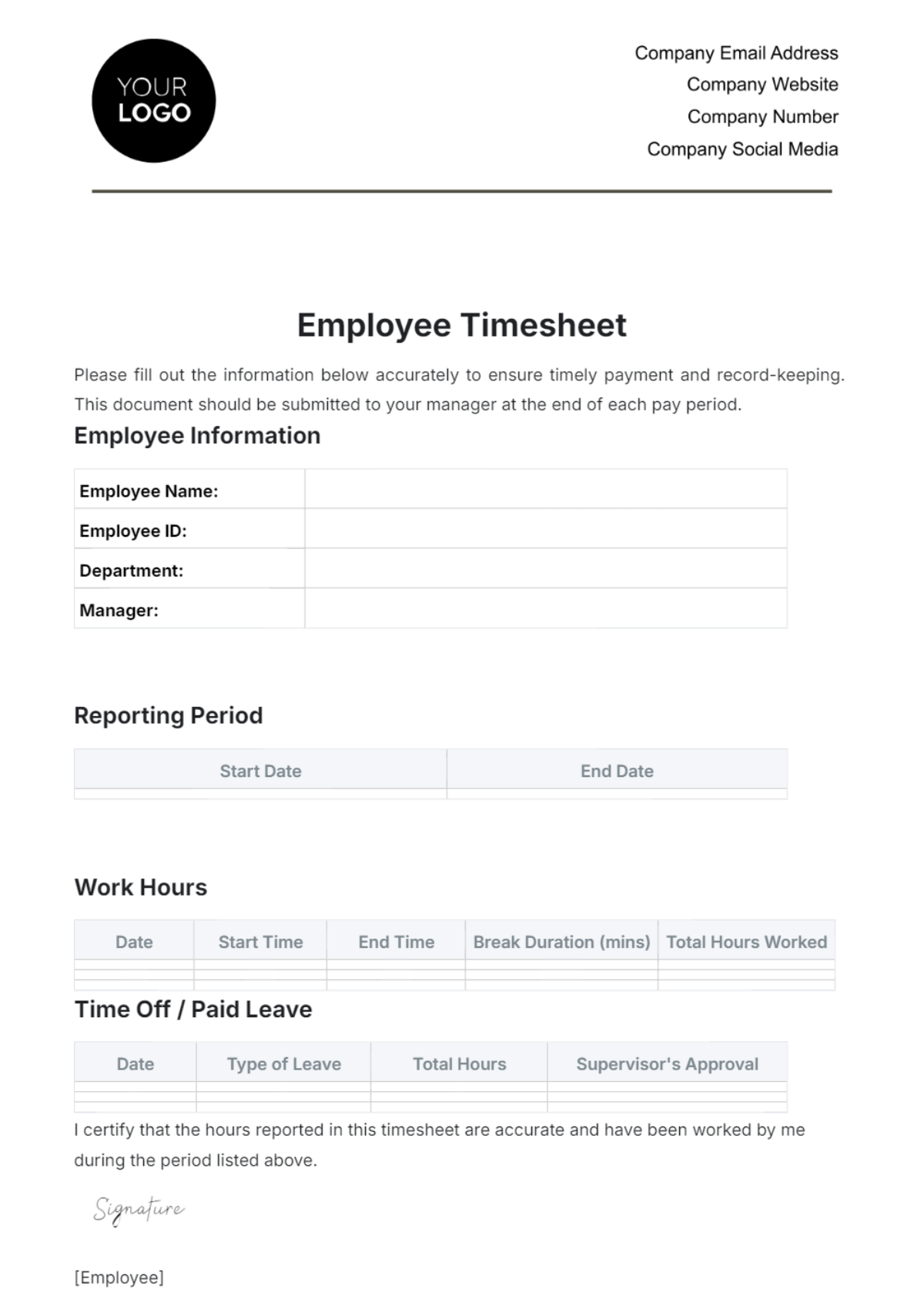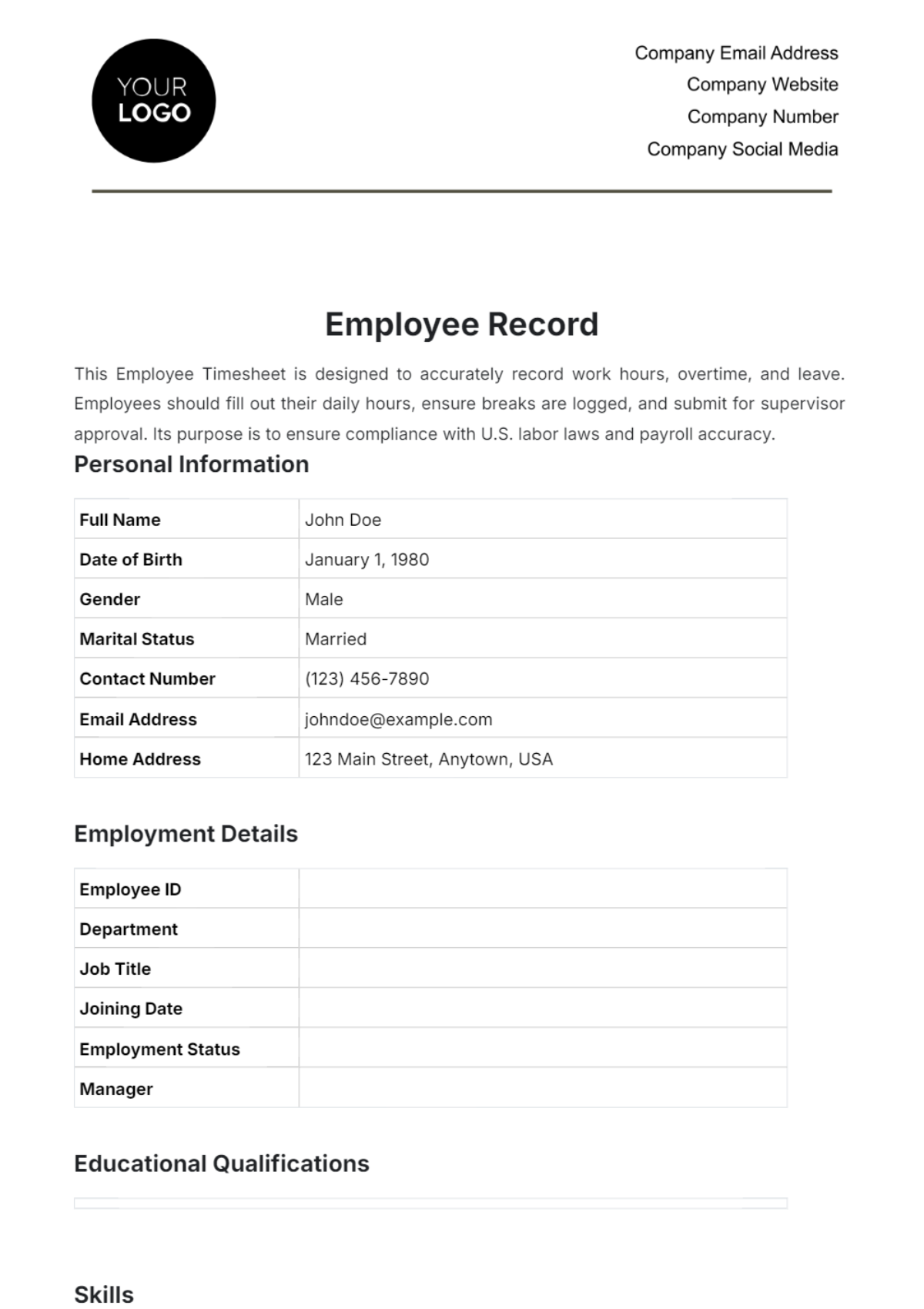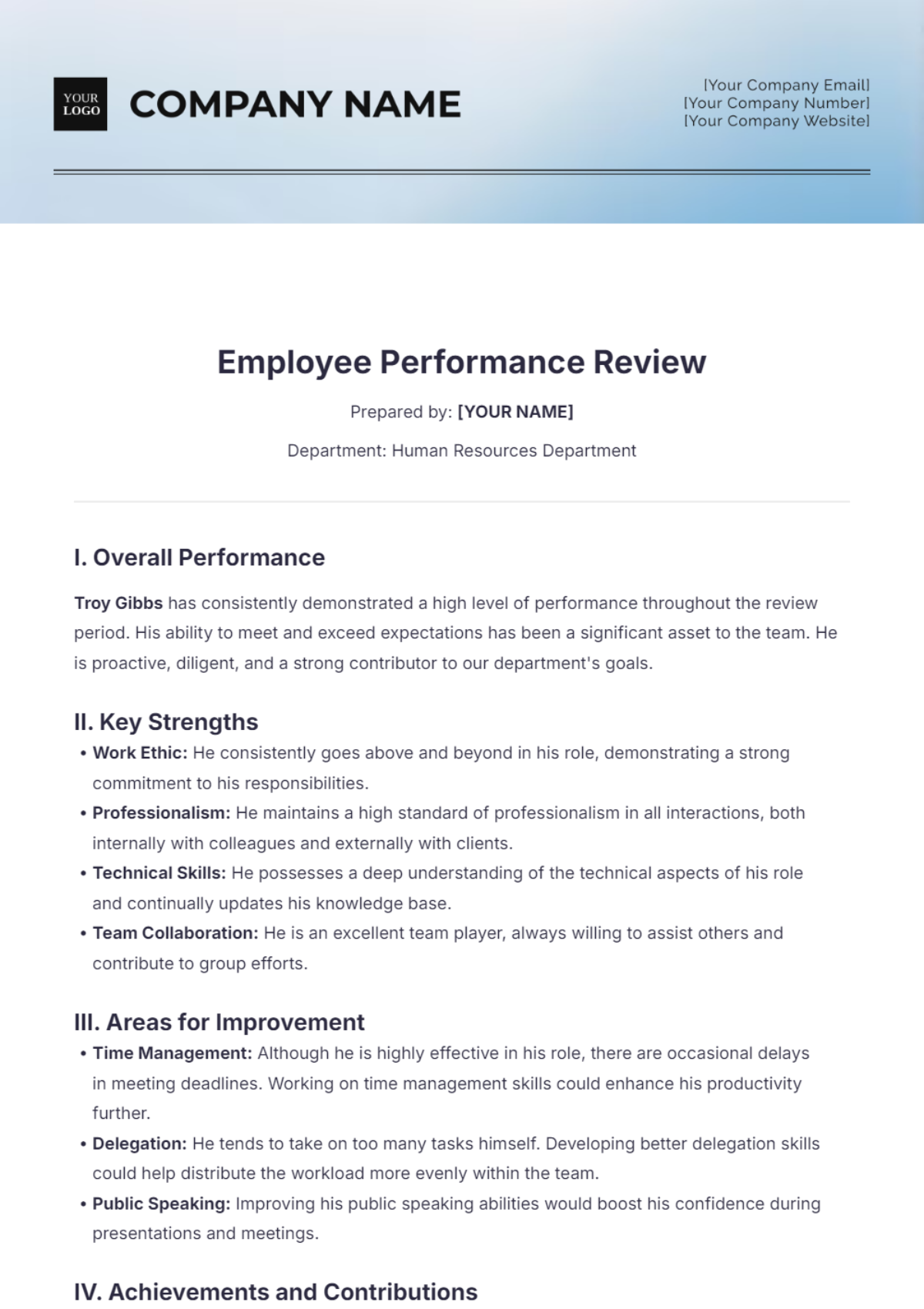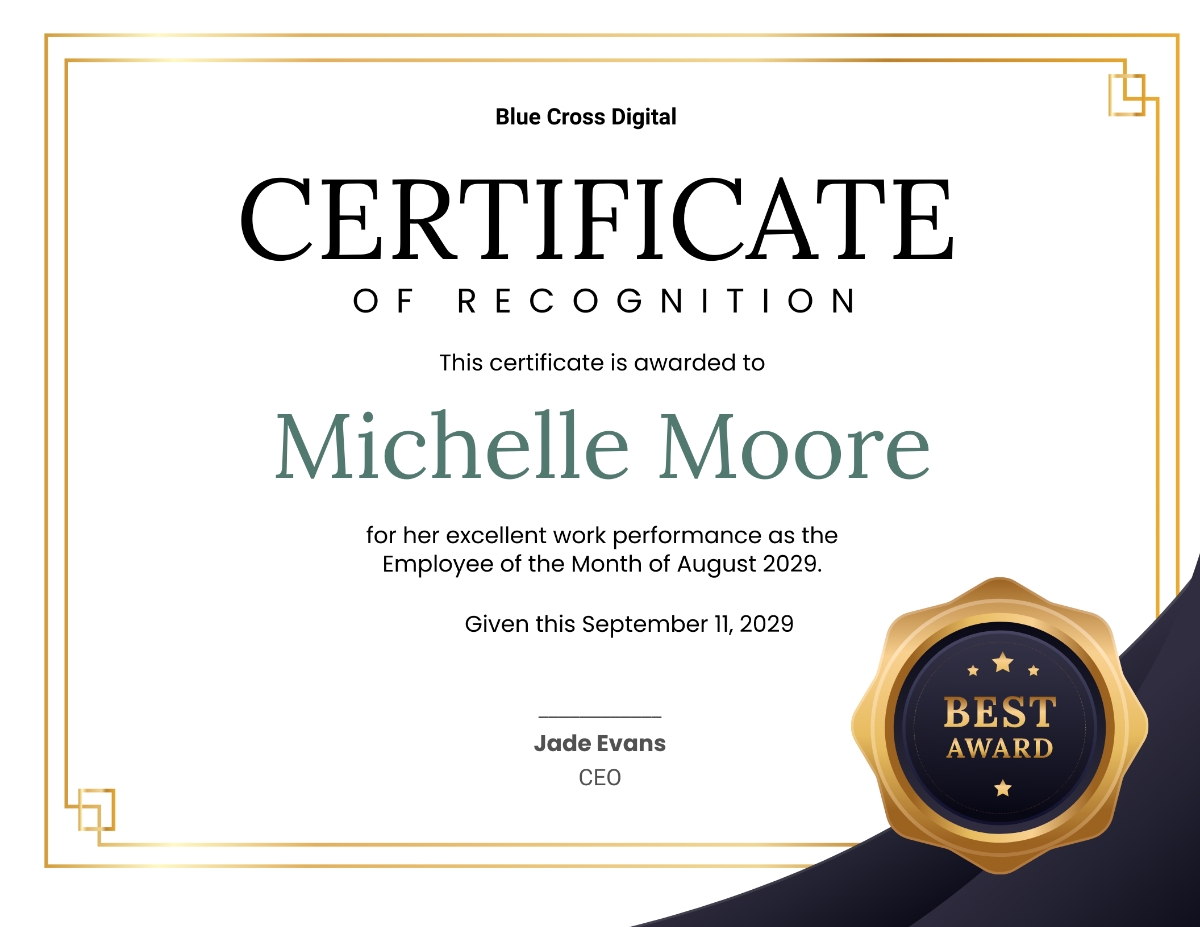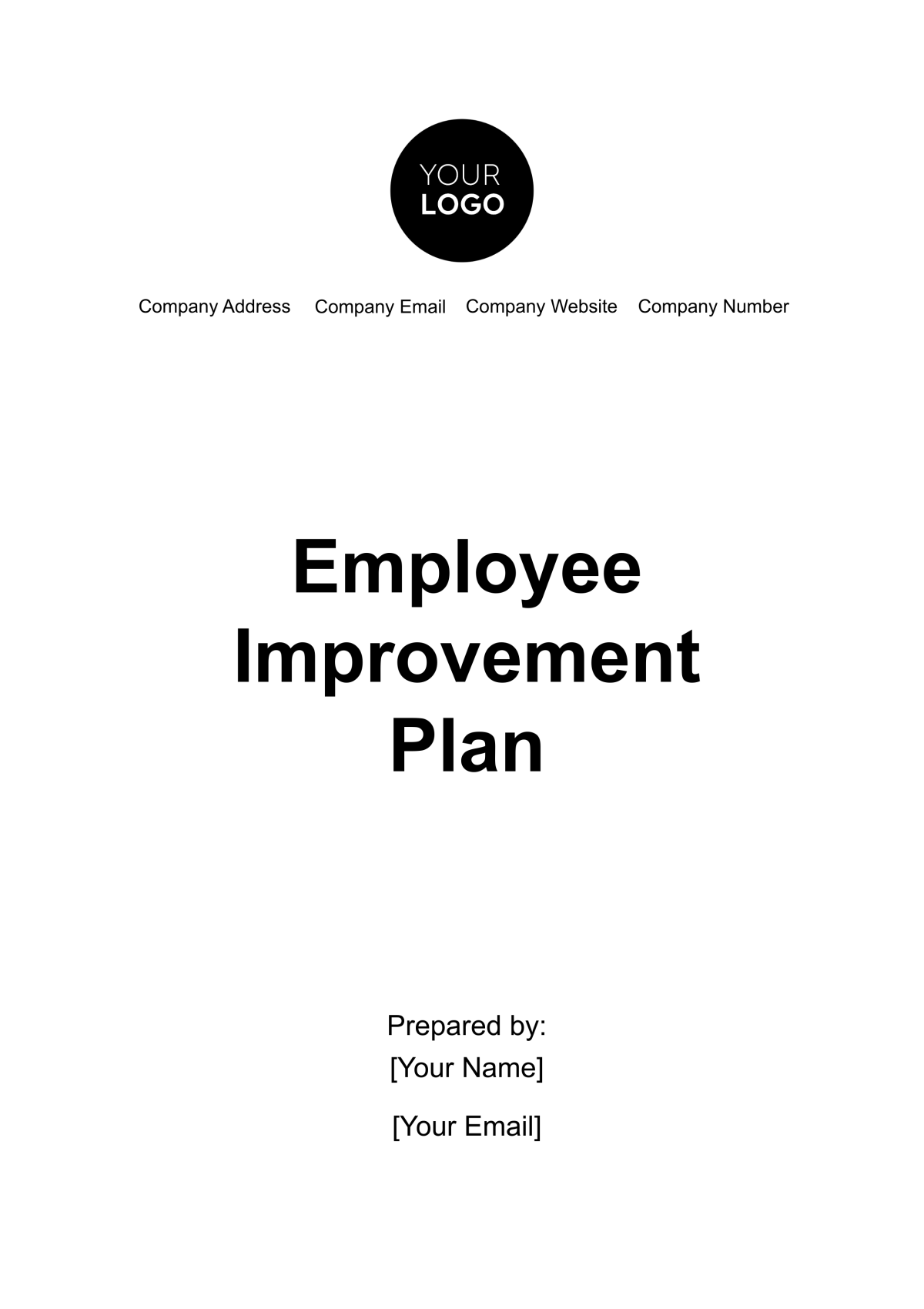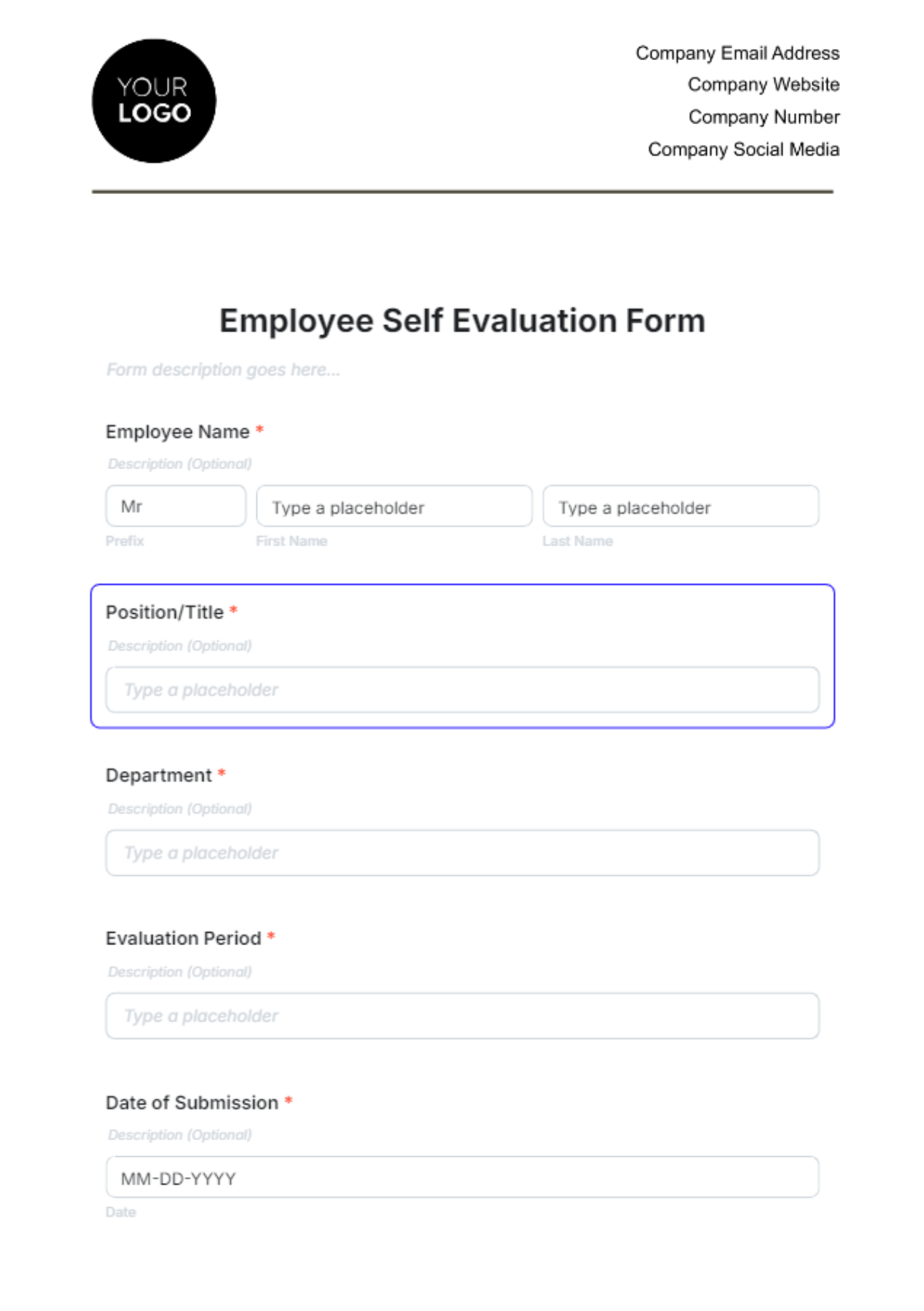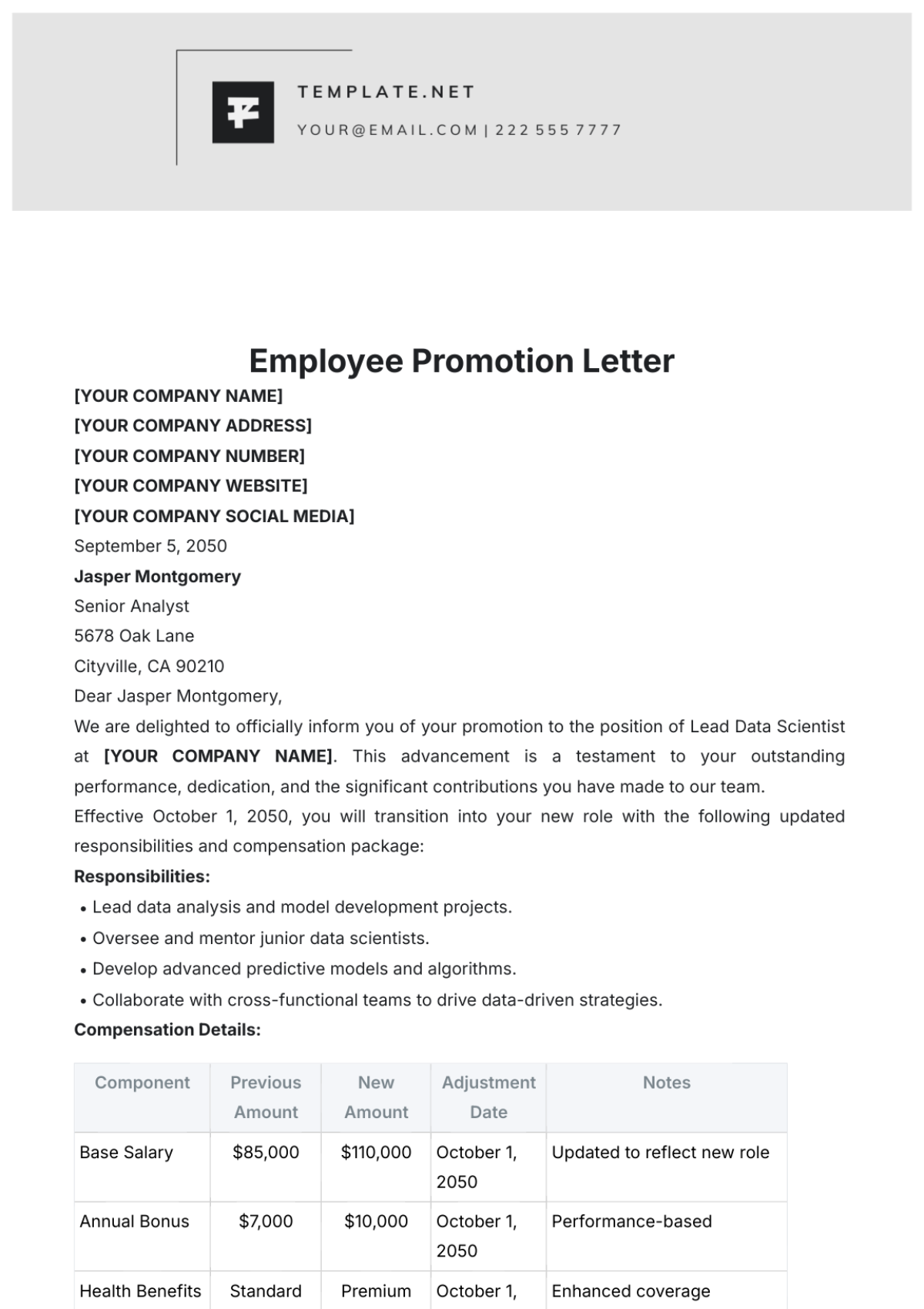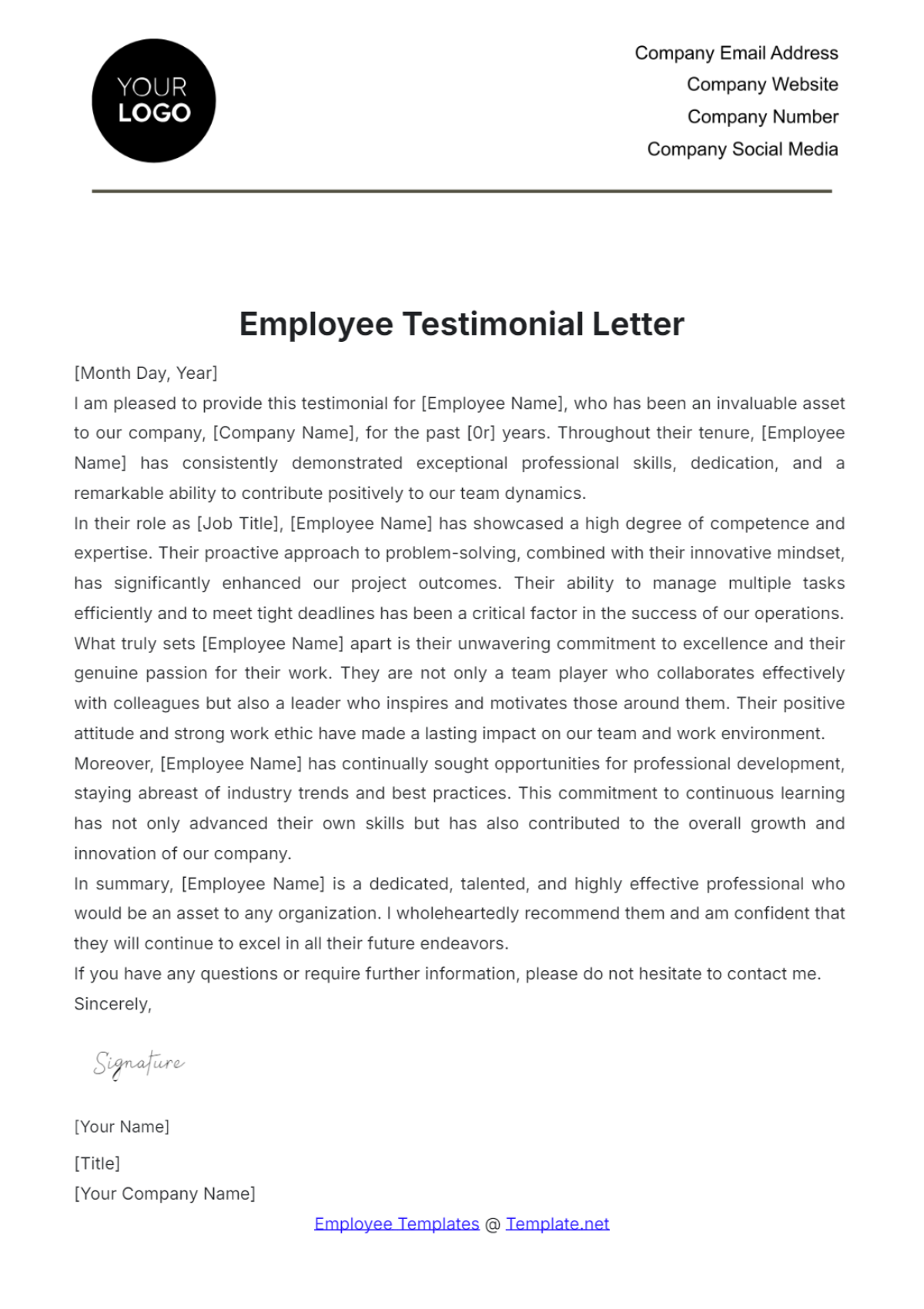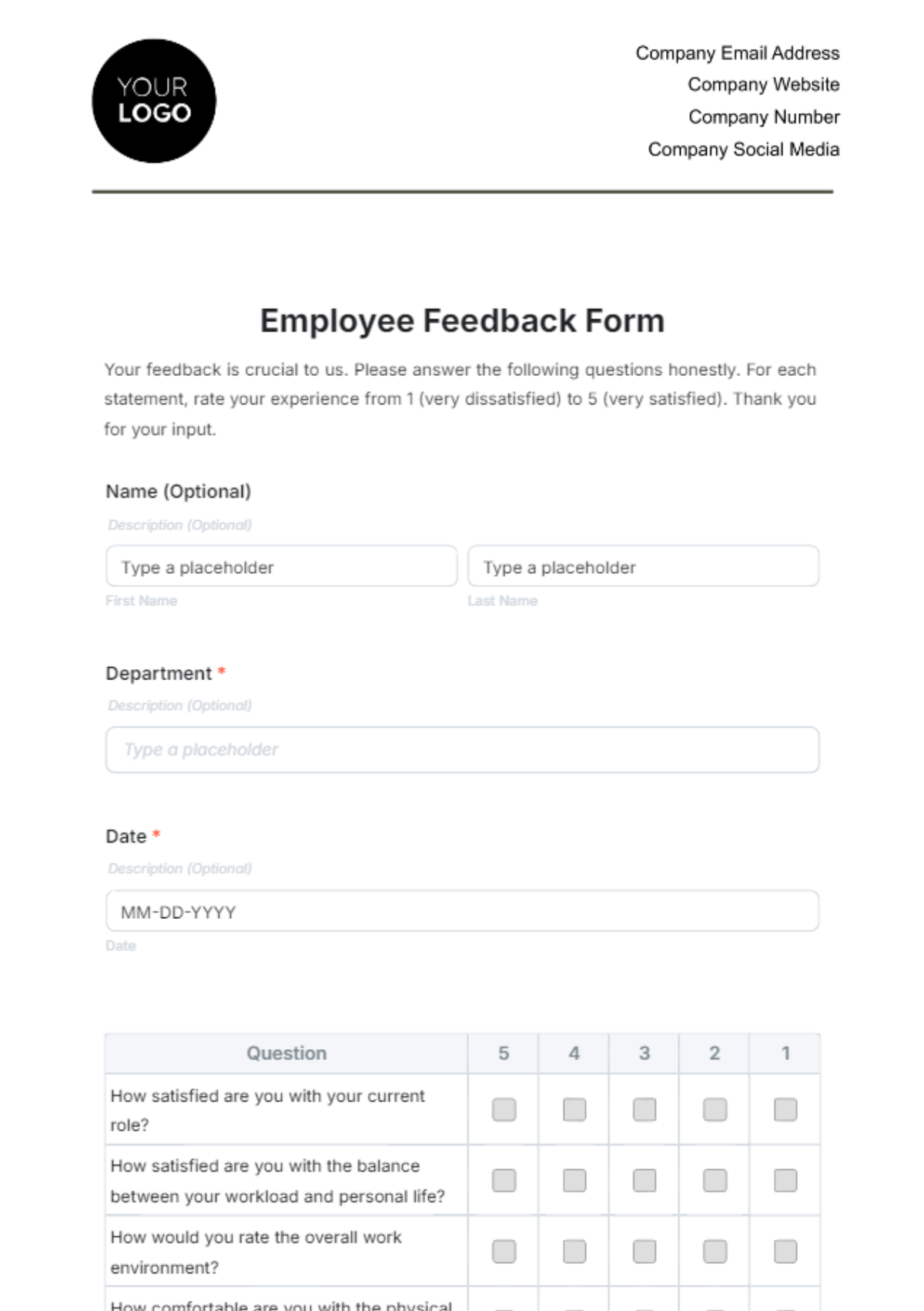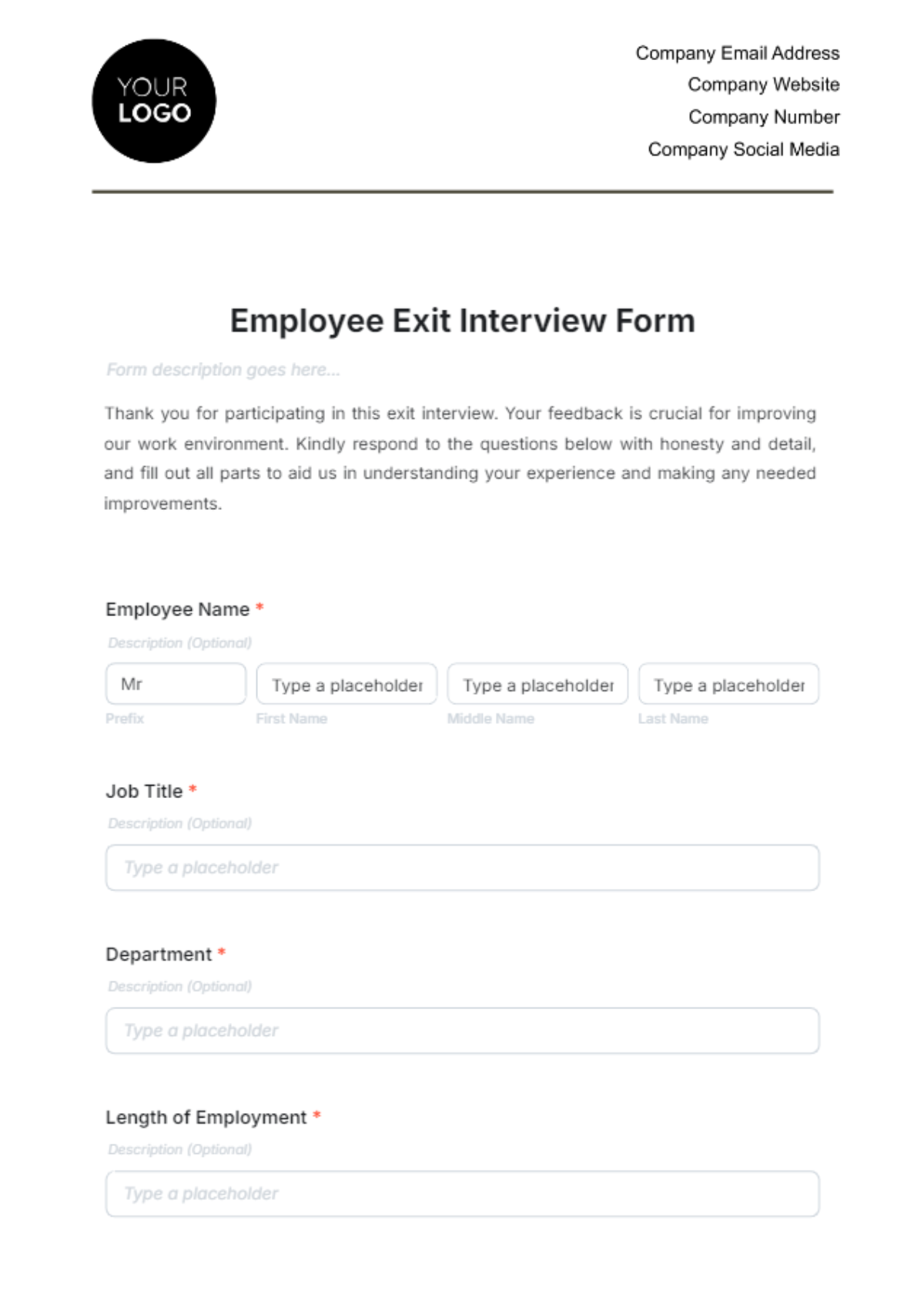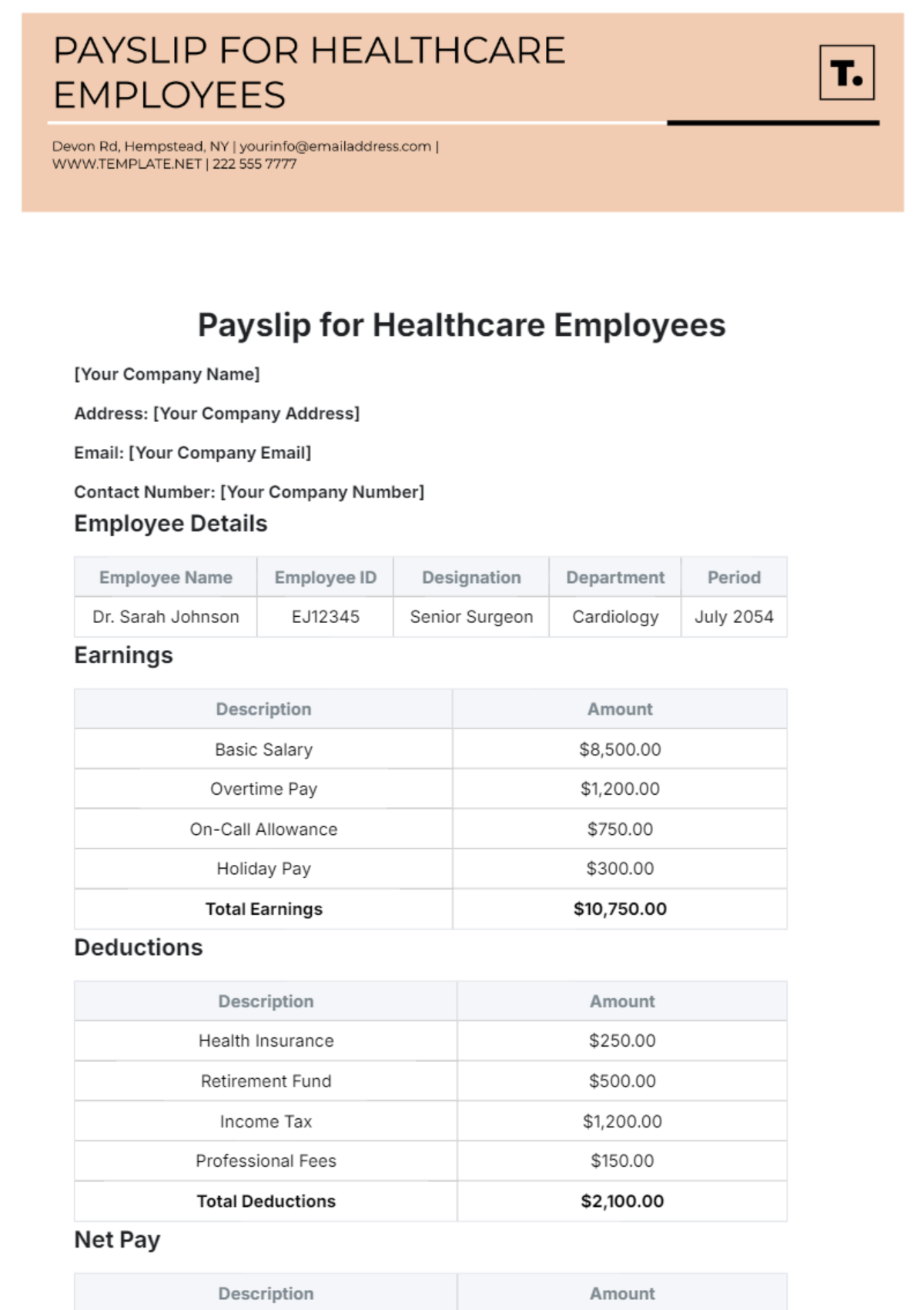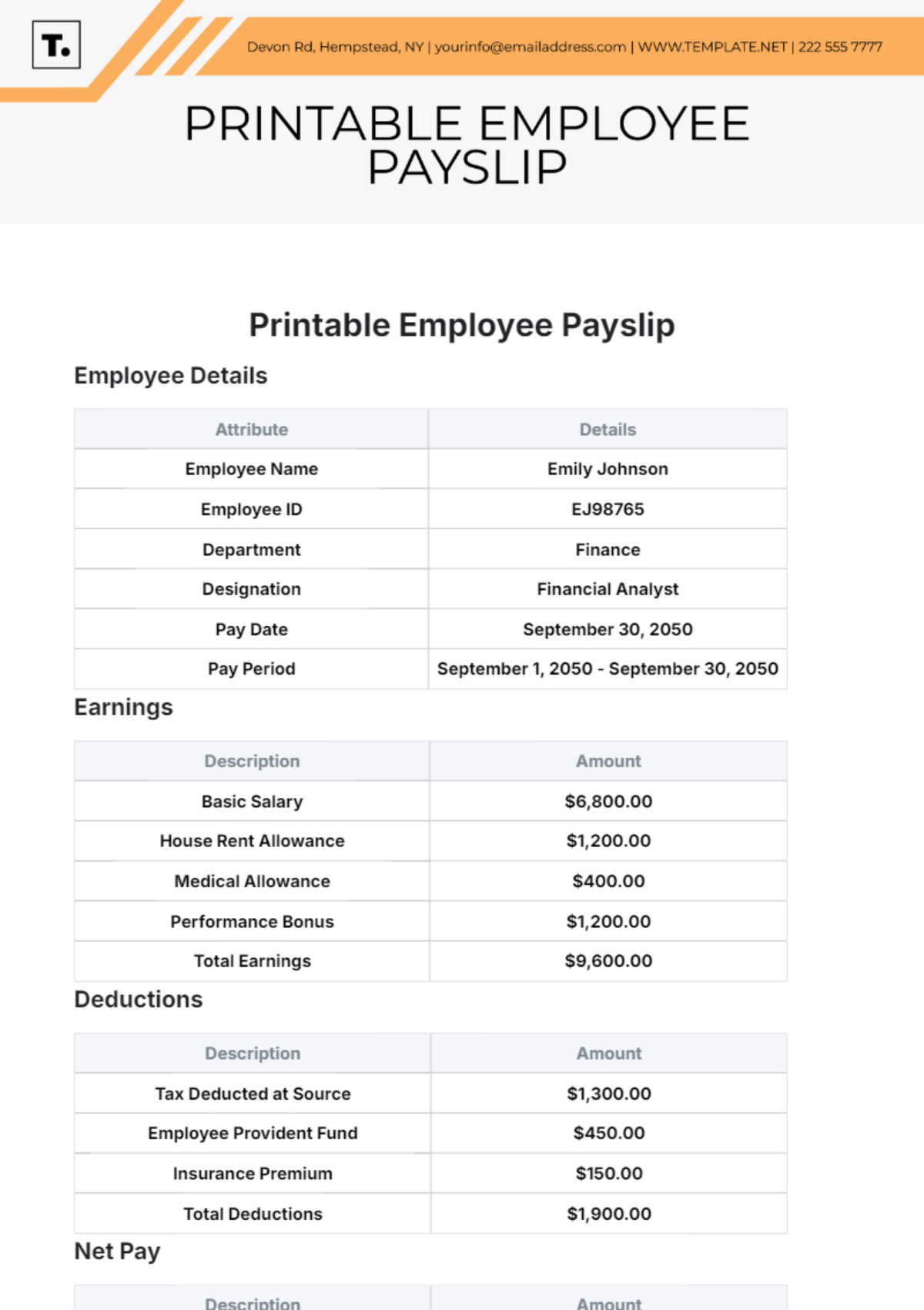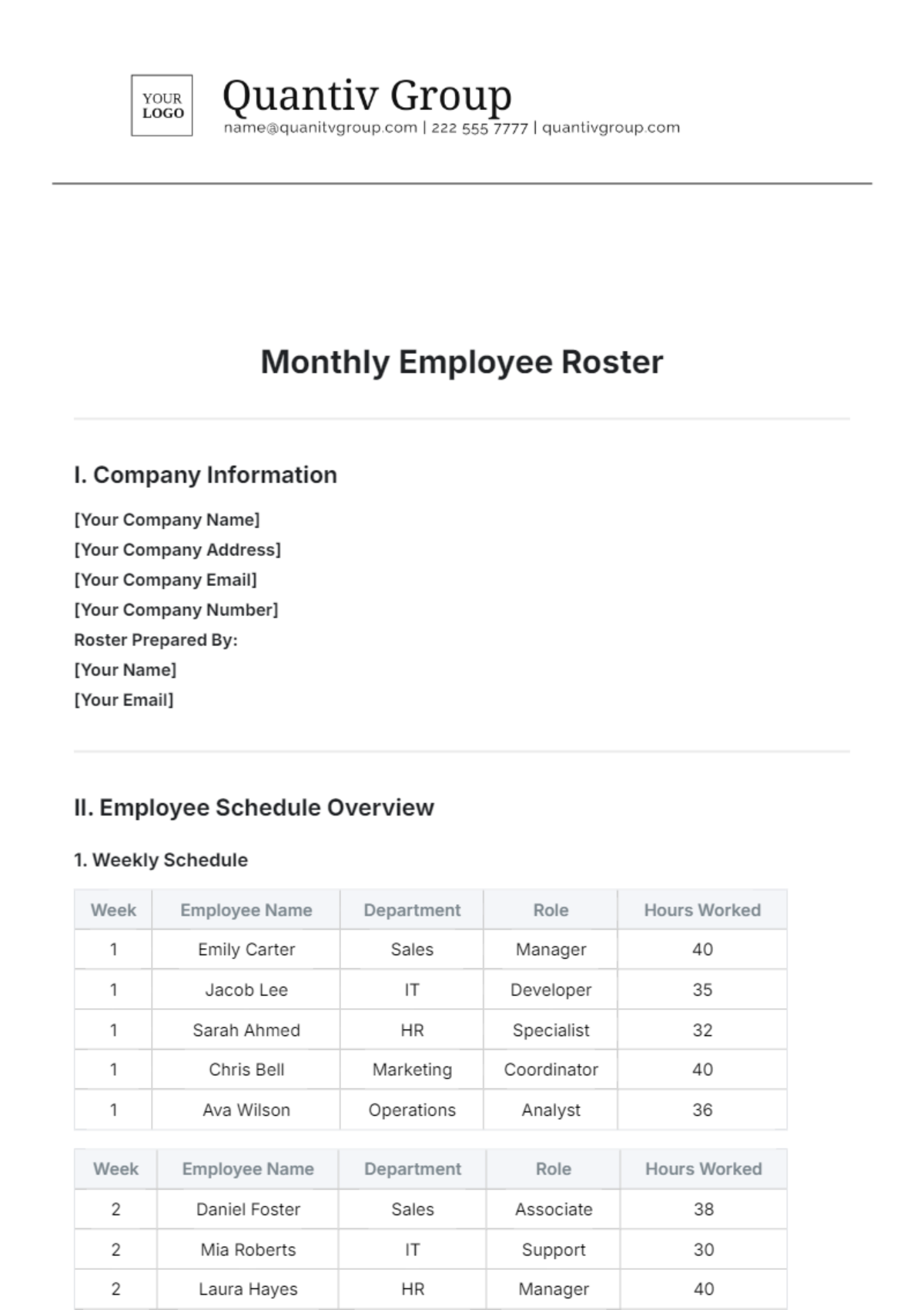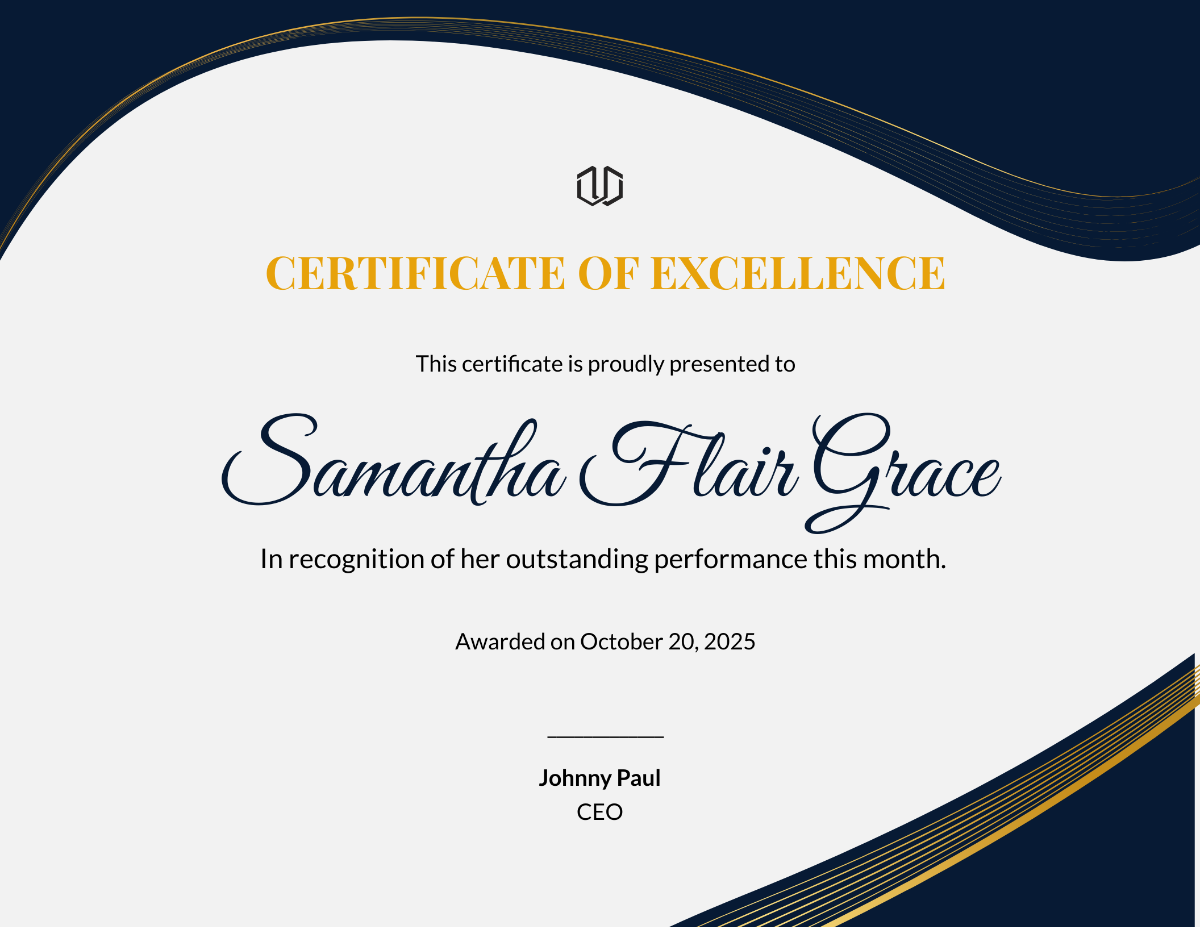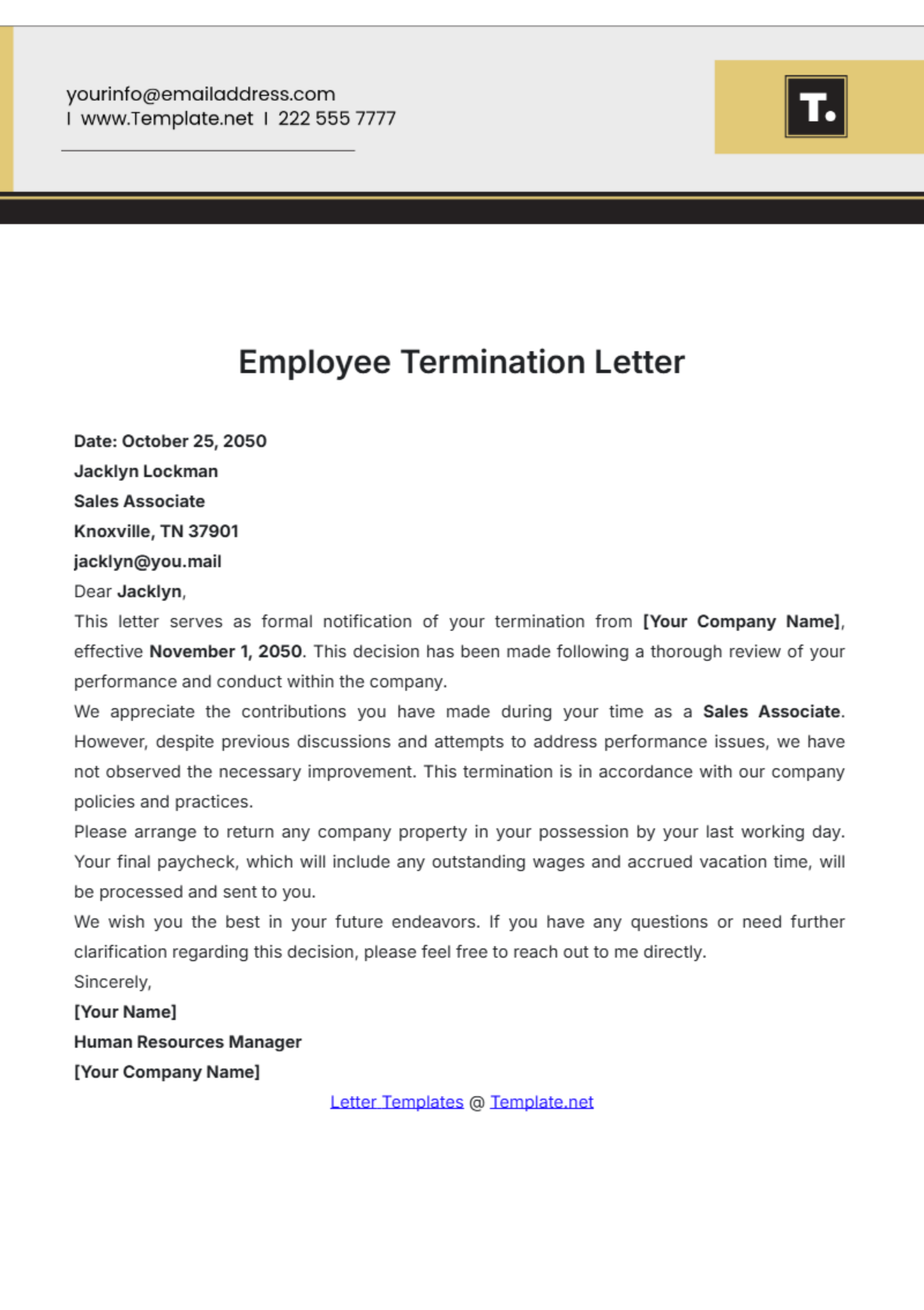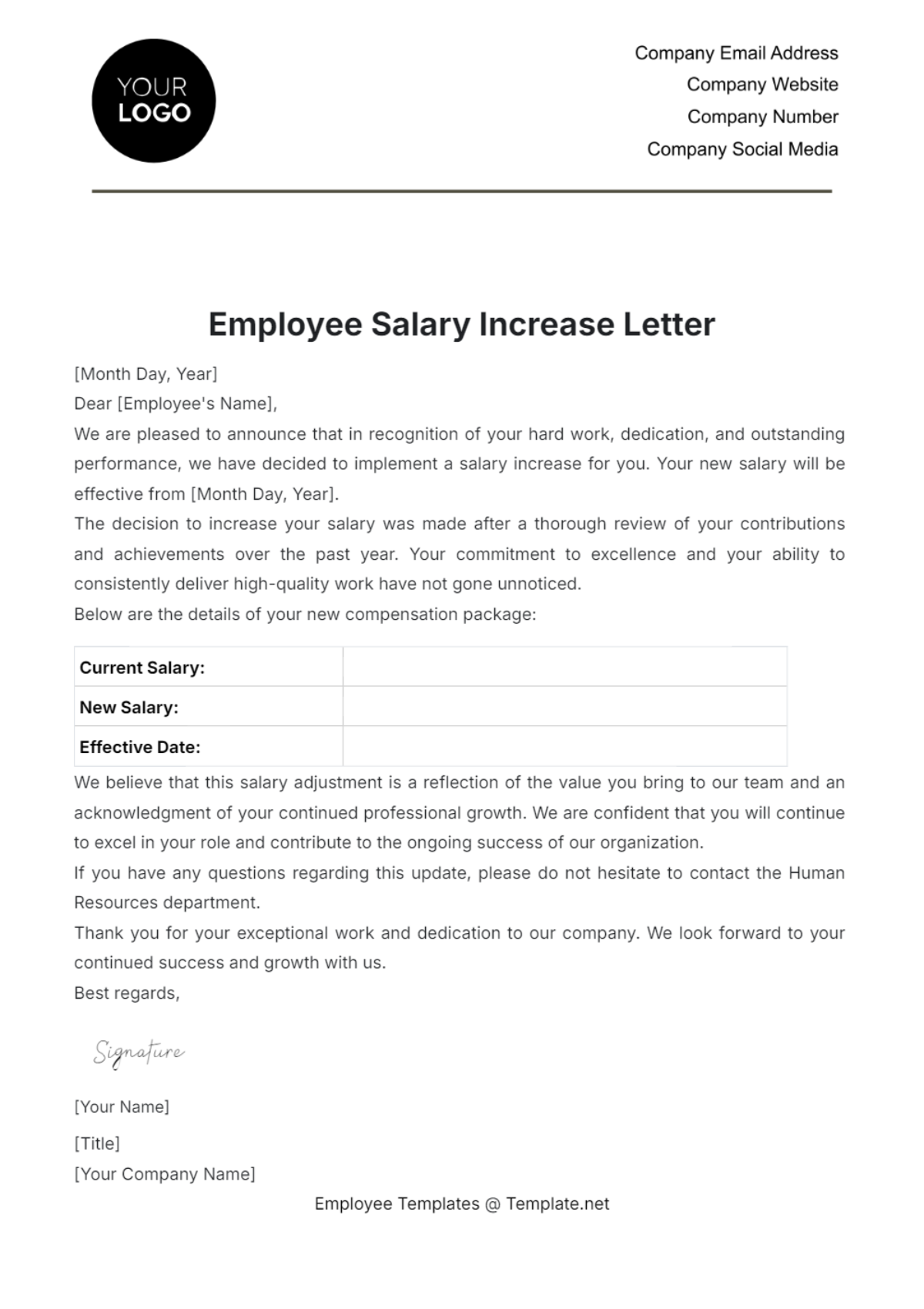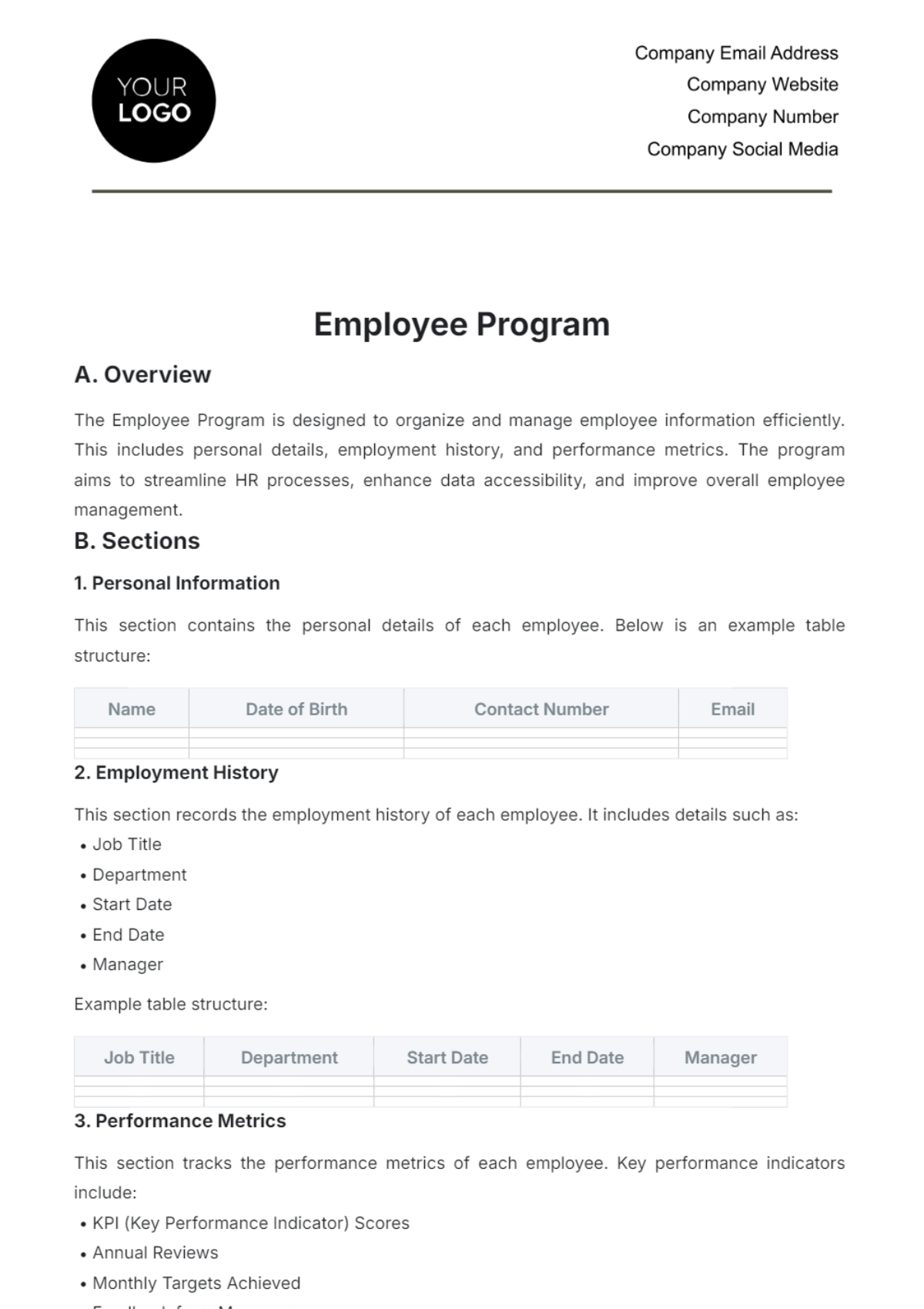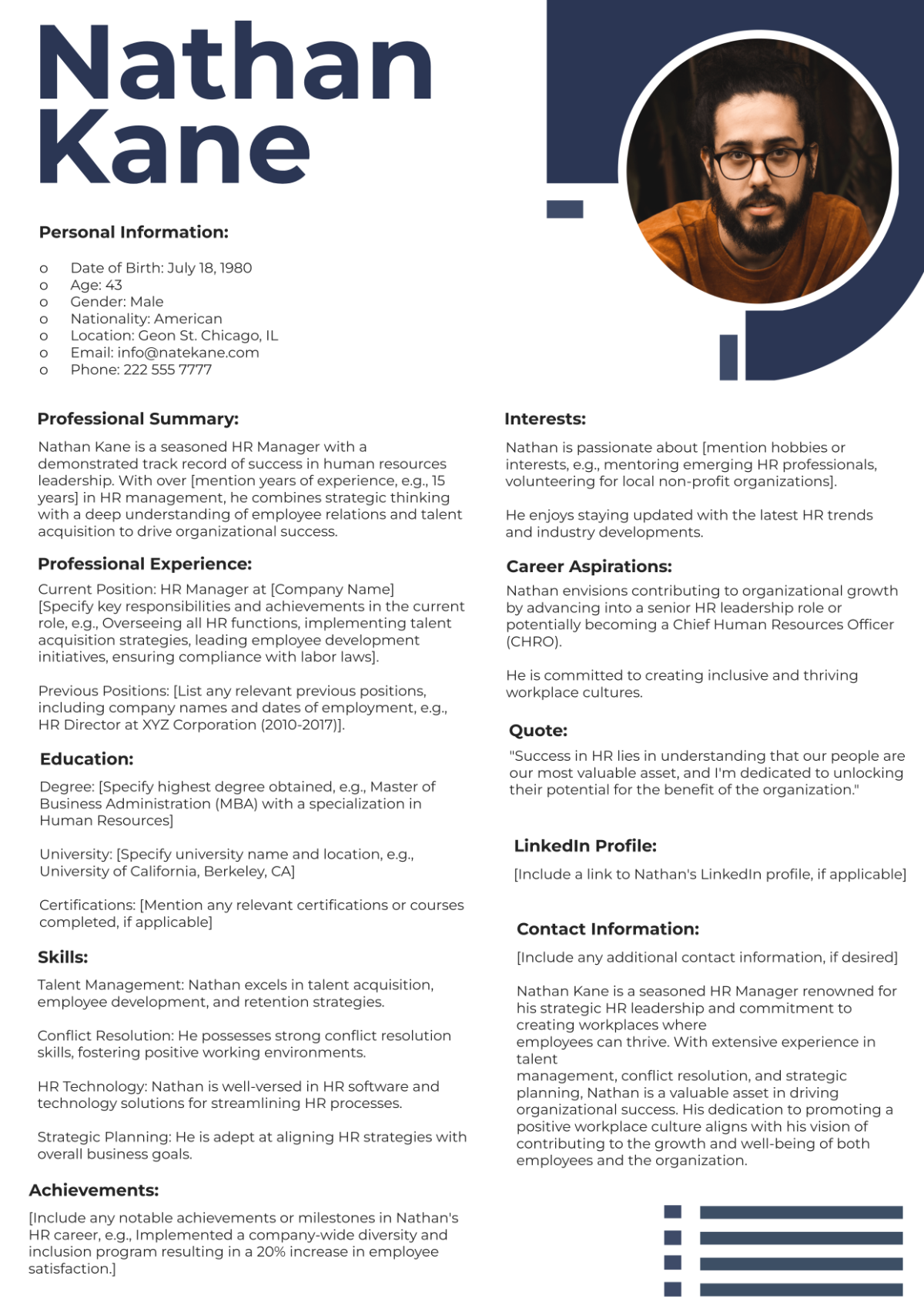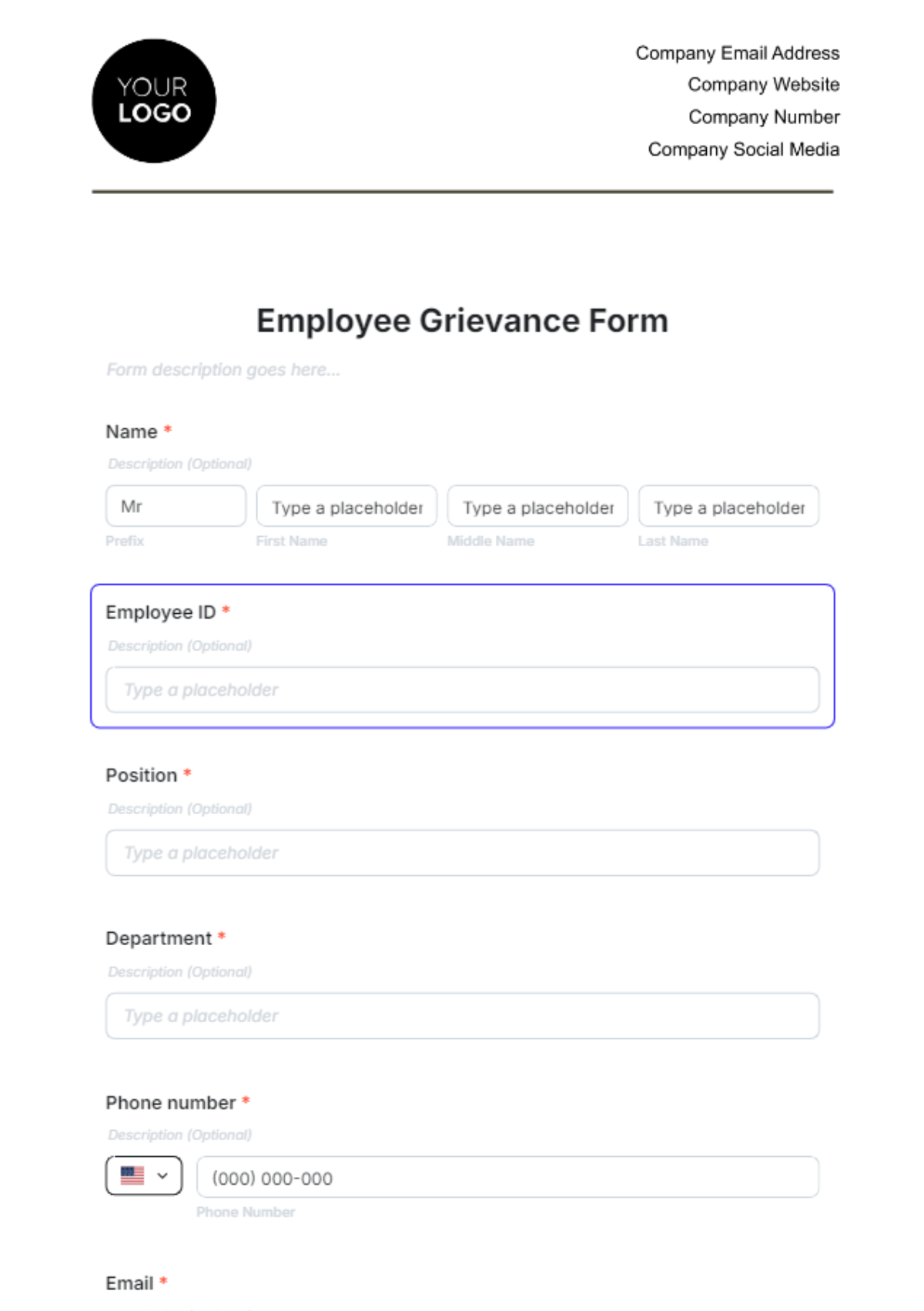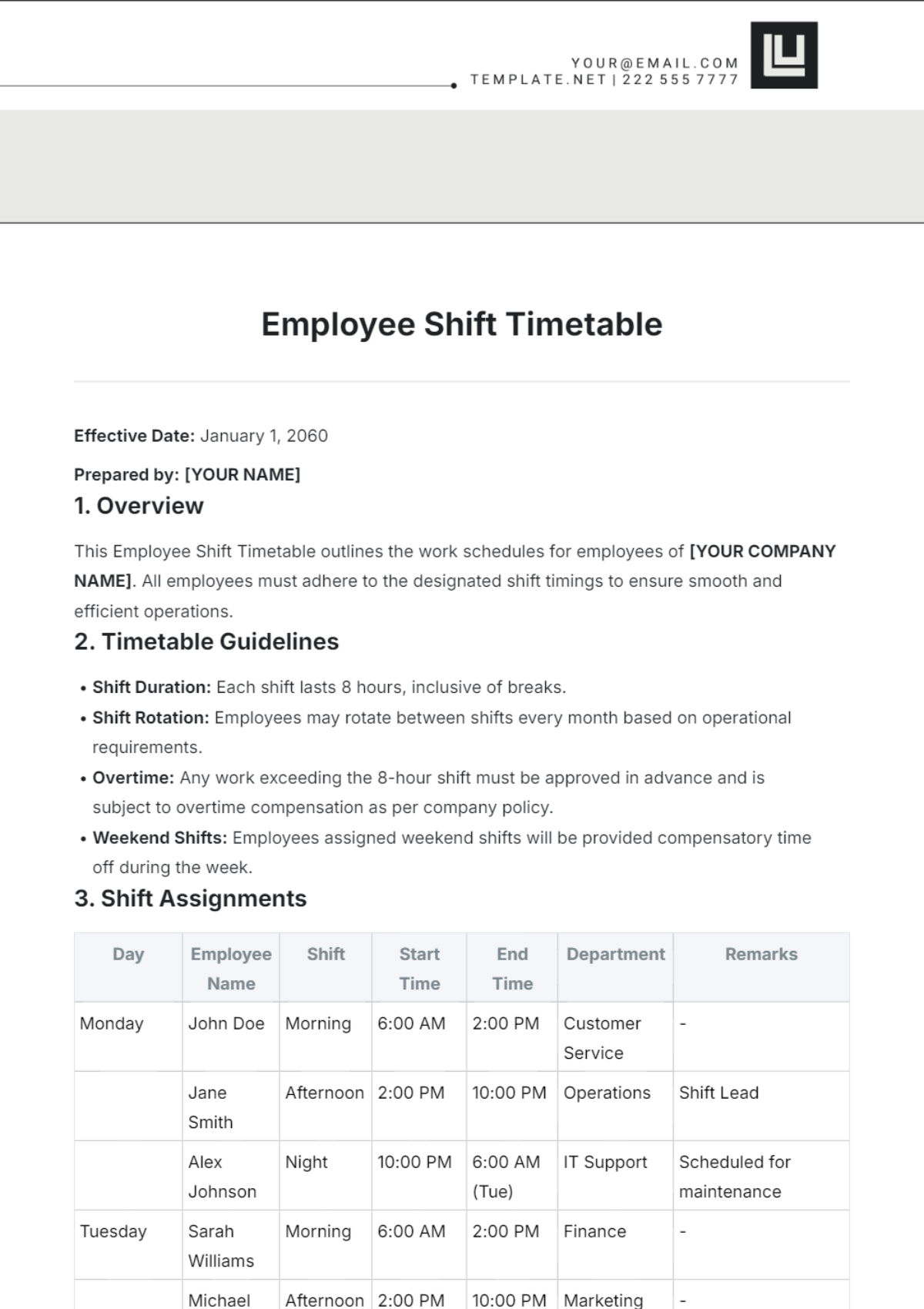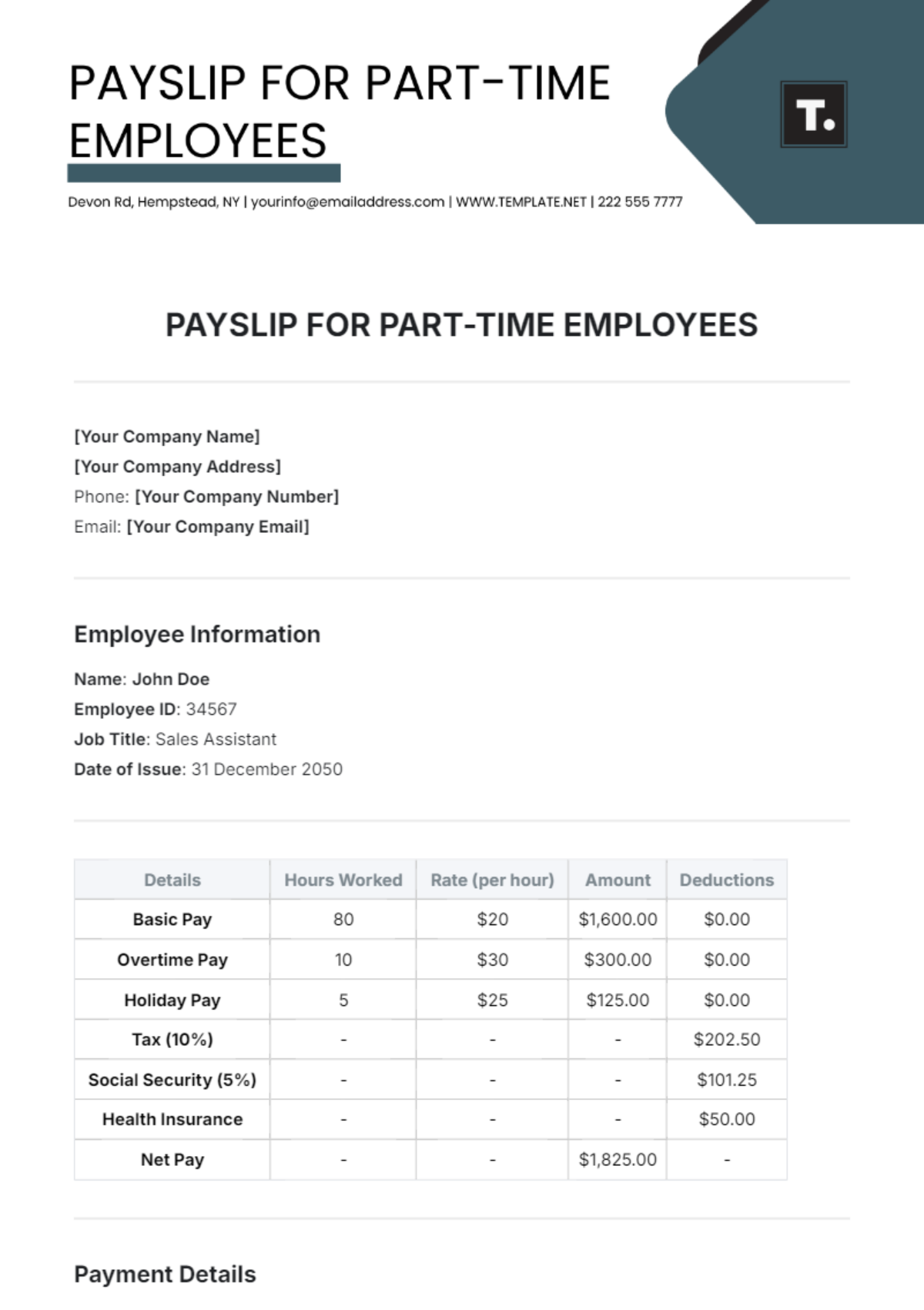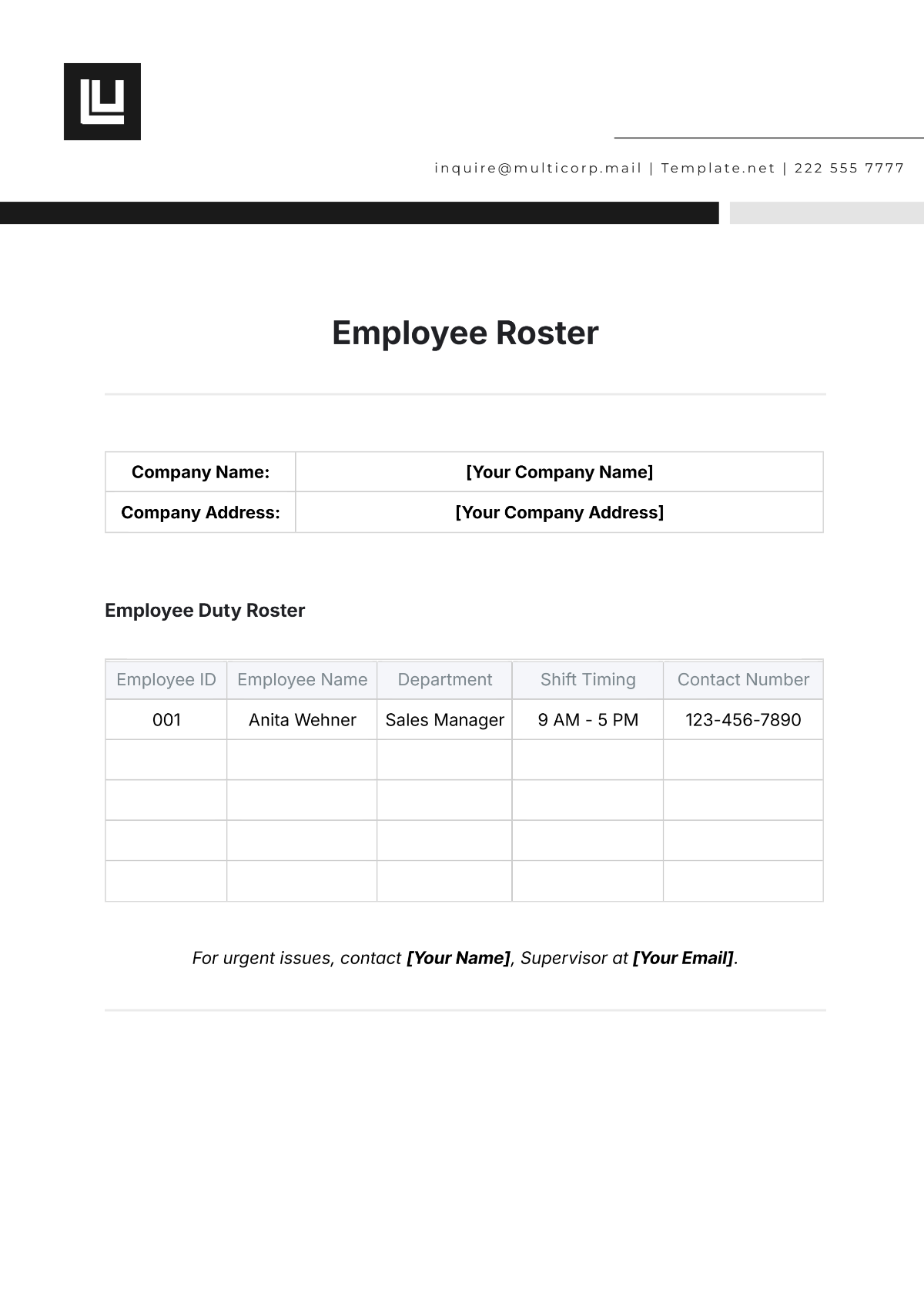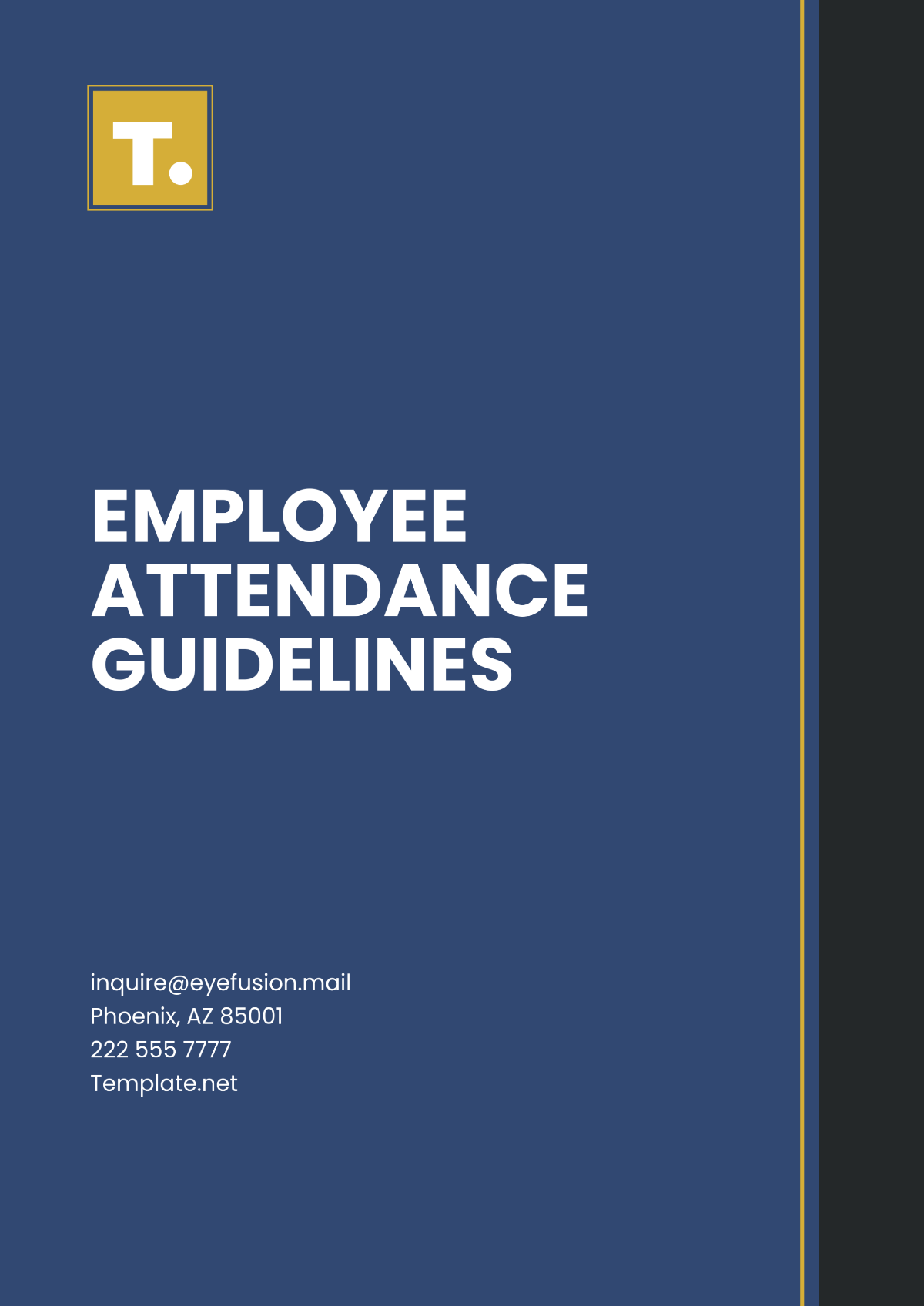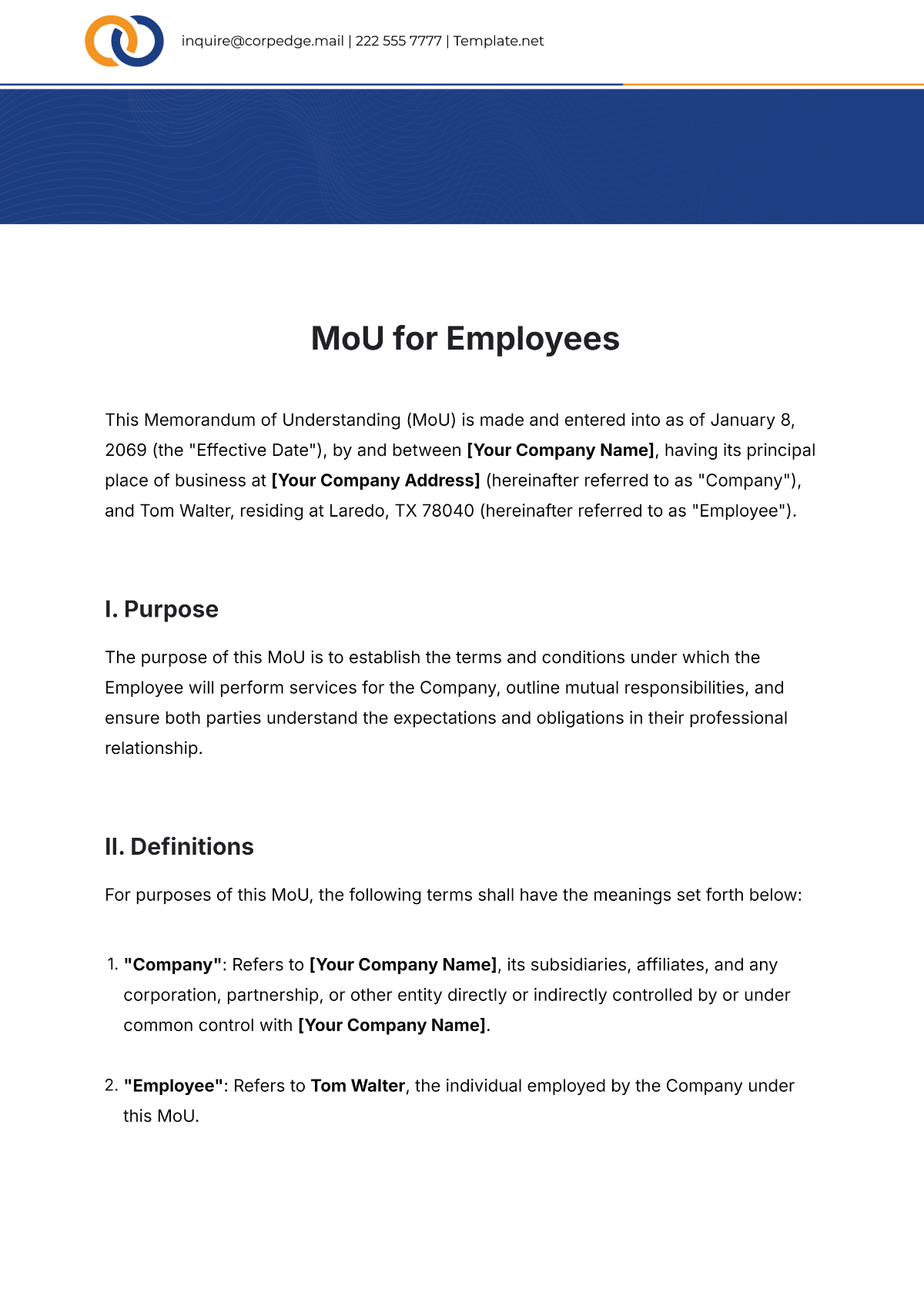Employee Performance Quality Report
Introduction
This report provides a comprehensive analysis of the performance quality of employees within the company for the fiscal year 2052-2053. It aims to identify key performance indicators, analyze trends, and propose actionable insights for improvement. The report is structured to give an overview of performance metrics, department-specific performance, and individual assessments.
Performance Metrics Overview
In this section, we discuss the various metrics used to evaluate employee performance. The assessment criteria are based on several quantitative and qualitative indicators.
Productivity Rate
Quality of Work
Attendance and Punctuality
Teamwork and Collaboration
Technical Skills Proficiency
Problem-Solving Abilities
Customer Feedback and Satisfaction
Data Collection and Methodology
The data for this report is collected through a combination of automated systems, peer reviews, customer feedback, and employee self-assessments. The methodology ensures that a holistic view of performance is captured, allowing for both objective and subjective performance indicators to be included.
Departmental Performance Analysis
This section provides an analysis of performance metrics across different departments within the organization. Each department was evaluated based on the specific metrics relevant to their function and goals.
Sales Department
The sales department focuses on meeting targets related to revenue generation and customer acquisition. The key metrics include:
Revenue Against Targets
Customer Acquisition Rate
Lead Conversion Rate
Customer Relationship Management
Metric | Performance Percentage |
|---|---|
Revenue Against Targets | 90% |
Customer Acquisition Rate | 85% |
Lead Conversion Rate | 78% |
Customer Relationship Management | 88% |
Research and Development Department
The R&D Department focuses on innovation, product development, and improving existing technologies. Key performance metrics include:
Innovation Index
Project Completion Rate
Quality of Outcomes
Collaboration with Other Departments
Metric | Performance Percentage |
|---|---|
Innovation Index | 75% |
Project Completion Rate | 82% |
Quality of Outcomes | 80% |
Collaboration with Other Departments | 77% |
Human Resources Department
The HR Department is pivotal in maintaining employee satisfaction and ensuring that company policies are adhered to. Key metrics for assessment include:
Employee Retention Rate
Onboarding Efficiency
Employee Satisfaction Score
Training and Development Efficacy
Metric | Performance Percentage |
|---|---|
Employee Retention Rate | 92% |
Onboarding Efficiency | 85% |
Employee Satisfaction Score | 88% |
Training and Development Efficacy | 79% |
Individual Performance Assessment
Individual performance evaluations are based on a mix of quantitative metrics and qualitative reviews. This section outlines the overall performance categories and exemplary performers.
Performance Categories
Exceeds Expectations: 20%
Meets Expectations: 60%
Needs Improvement: 15%
Unsatisfactory: 5%
Exemplary Performers
The following individuals have been identified as exemplary performers, consistently surpassing the outlined performance metrics:
John Doe, Sales
Jane Smith, Research and Development
Emily Taylor, Human Resources
Recommendations and Conclusion
Based on the analysis provided in this report, several recommendations are proposed to enhance employee performance across the organization:
Implement Regular Training Programs to Enhance Skills
Develop a Rewards System for High Performers
Enhance Collaboration Opportunities between Departments
Utilize Feedback Mechanisms More Effectively
Conduct Regular Performance Reviews and Feedback Sessions
